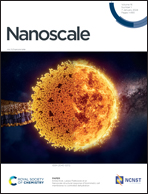Theoretical investigation of synergistically boosting the anchoring and electrochemical performance of lithiophilic/sulfiphilic transition metal carbides for lithium–sulfur batteries†
Abstract
Lithium–sulfur (Li–S) battery is one of the most promising next-generation energy-storage systems with a high energy density and low cost. However, their commercial applications face several challenges, such as the shuttle effect caused by the soluble lithium polysulfide (LiPSs) intermediates and the sluggish sulfur redox reaction. In this article, we systematically investigated the anchoring and electrochemical performance of a series of transition metal carbides (TMCs: TiC, VC, ZrC, NbC, HfC, TaC) as cathode materials for Li–S batteries by theoretical calculations. The lithiophilic/sulfiphilic non-polar (001) surfaces of TMCs can offer moderate binding strength with LiPS intermediates, ensuring good performance of sulfur immobilization. These TMCs can also facilitate lithium diffusion, indicating the good rate performance of Li–S batteries. We also demonstrated that the studied TMCs can be classified into two classes according to their catalytic activity for Li2S decomposition which originated from their different electronic structural features. Furthermore, TiC, ZrC, and HfC exhibited excellent bifunctional electrochemical activity through reducing the Gibbs free energy for sulfur reduction reactions (SRRs) and lowering the barrier for Li2S decomposition which facilitates accelerating electrode kinetics and elevating utilization of sulfur. Our results offer a systematic approach to designing and screening non-polar materials for high-performance Li–S batteries, based on the rational electronic structure and lattice match strategy.



 Please wait while we load your content...
Please wait while we load your content...